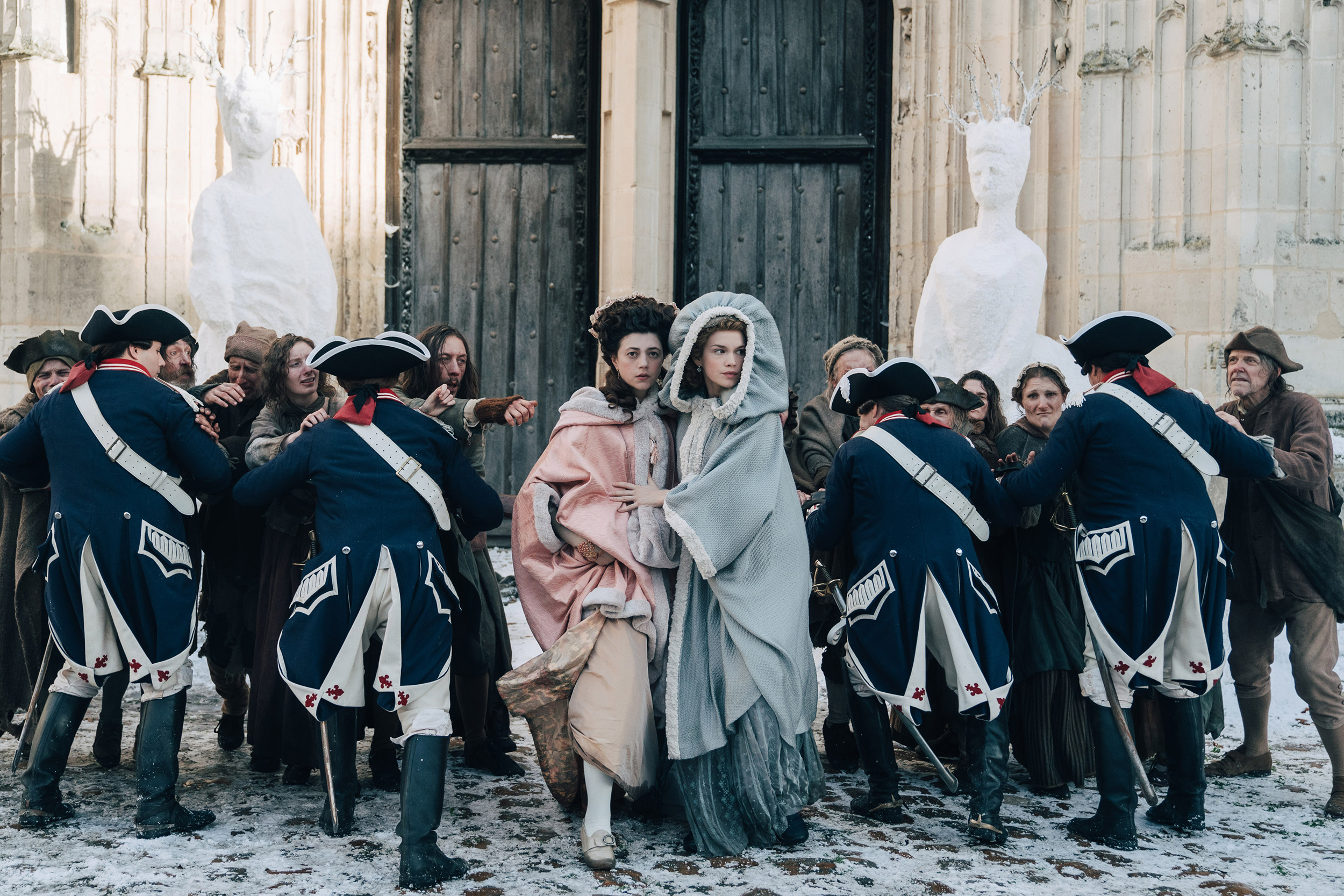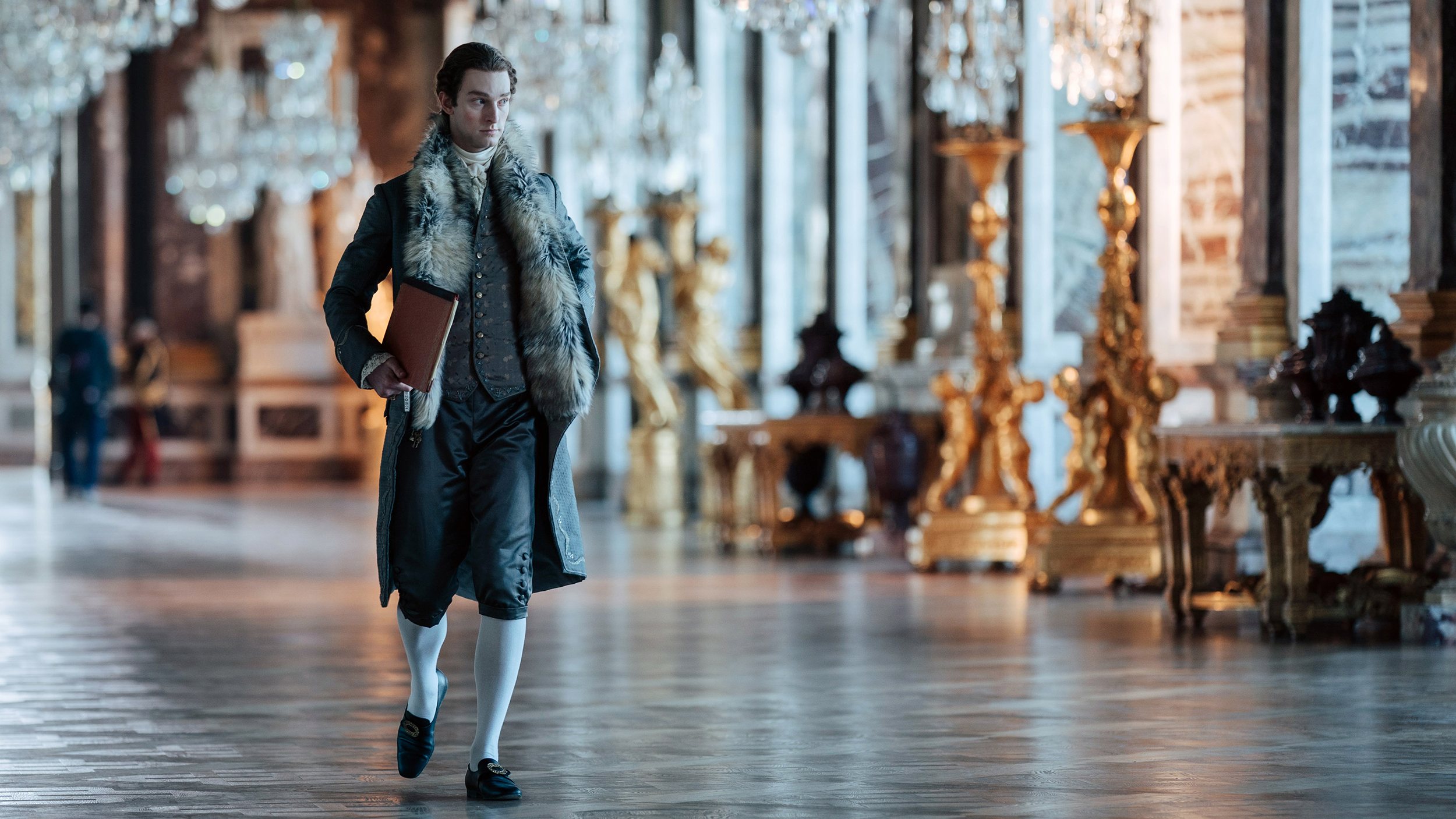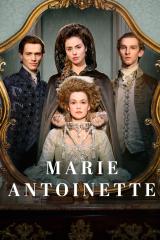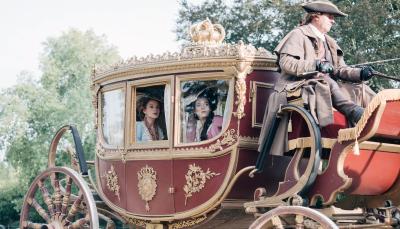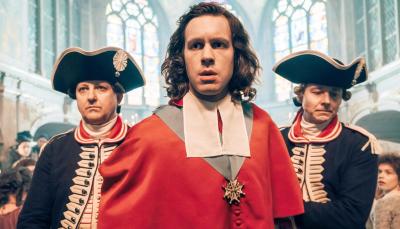Exploring the Sites & Sets with 'Marie Antoinette's Production Designer

Guy Henry as Vergennes, Caroline Piette as Victoire, Jack Archer as Provence, Louis Cunningham as Louis XVI, Roxane Duran as Josephine, Patrick Albenque as Breteuil in 'Marie Antoinette' Season 2
Caroline Dubois/Capa Drama/Canal Plus
As the soap opera-like drama of Marie Antoinette’s second season plays out, you might not consciously take in all the details of the queen’s surroundings: the glittering chandeliers of Versailles’ grand halls; its imposing marble walls; the rich brocade upholstering of the royal thrones; the ornate furnishings. But rest assured, production designer Clovis Weil and his team paid attention, enveloping Antoinette and the other players in a fully realized world of sumptuous settings and gorgeous grounds. Weil graciously shared behind-the-scenes tidbits about filming locations, design concepts, and more.
Season 2 was filmed “never further away than 50km” from Paris, in and around the capital. Although Versailles is almost a character unto itself, filming directly at the famous castle proved difficult to arrange. They only had access on Mondays and therefore received minimal footage, as only a handful of days were spent on site.
“We shot in huge and famous castles like Versailles, Fontainebleau, Vaux-le-Vicomte,” Weil told Telly Visions, “but also smaller castles or mansions, public or private, like Champs-sur-Marne, Balincourt, Crèvecoeur. We also shot some exteriors in the small town of Senlis.” Weil went on to say how difficult it is to shoot a period drama in Paris. “It is expensive, we usually can’t have many trucks around the set, we have very little time to dress and wrap the sets…”
What we see onscreen is a fifty-fifty ratio of built sets and real locations. The real locations were also supplemented with numerous constructed sets, including streets in Senlis, to the États Généraux (built inside l’Église du Saint-Esprit), to the court, and the bar inside the Palais Royal. “Half of the sets you see in the series were built from scratch on stage, in Bry-sur-Marne studios.”
Filming took place on site at the real Palais Royal, though the exteriors were accessorized, and some shops were built as props. This season highlights the contrast between Versailles and the Palais-Royal. Weil explained his vision: “To underline the opposition with Versailles, cold and imposing, I chose a much warmer and colorful palette, and also played with fabrics with a striped pattern that will become very fashionable during the Revolution.”
He described needing Chartres’ lair to feel “lively, crowded, and even sexy somehow. It was a place where many Parisians gathered to have fun, to buy clothes, wigs, to flirt, or even have sex. And it was one of the cradles of the French Revolution, where political and seditious ideas were exchanged and debated. It’s also the first place of opposition to Louis and Marie Antoinette.”
So much of Marie Antoinette plays out in the private apartments of the king and queen, whose interiors contrast with the rest of the castle. This was a style choice. “We needed to feel the difference with the more public part of their apartments. It needed to feel cozier, warmer, a kind of refuge from the court and the pomp that goes with it.”
Weil’s favorite set was the dauphin’s nursery, with its hot-air balloon bed and giant map on the floor. “I thought of it as the opposite of the king’s office, very vertical and imposing. Louis needed to feel overwhelmed by the burden of power in his office, and the nursery was his safe place, where he could escape from the court. There are a lot of elements in that set that underline his interest in travels, the discovery of the new world, and his fascination for Bougainville’s explorations.”
Speaking of set pieces, most of the portraits and paintings shown in the series were sourced. However, ones that needed to show the real actor’s face, we photoshopped some actual portraits and repainted them. It was quite challenging for those with Marie Antoinette because Emilia Schüle doesn’t have an 18th-century type of face. We struggled quite a bit on that one.”
Apart from his children sometimes keeping him up at night, Weil didn’t spend much time stressing. As a seasoned designer, not much ruffles his feathers, except maybe “the two snow figures of Louis and Marie Antoinette,” Weil confesses. “A snowman doesn’t look like much as it is, so we had to find a silhouette that looked like something and that could be recognizable, but that wasn’t too well done.”
Weil truly enjoys the creative process, and his inspiration for each new project starts with gathering many references. “I spend some time in museums, to know accurately the period, the mind of the time. I also get some inspiration from the arts in general that helps to free me from strict historical accuracy.” He likes to explore the techniques and art of the period as a jumping point. “We’re making movies, not documentaries. I think we’re allowed to bend a bit the exact reality of the times, to emphasize some important narrative or psychological elements, as long as we stay true to the period. History must be an inspiration, not a straitjacket.”
Catch the intrigue (and the gorgeous sets!) weekly. Marie Antoinette Season 2 airs Sundays on most local PBS stations, the PBS App, and the PBS Masterpiece Prime Video Channel at 10 p.m. ET. All eight episodes of the new series are available on PBS Passport for members to stream. Season 1 is available to stream for members on PBS Passport and on the Prime Video Masterpiece Channel.

